Tibet
 Life on the street in Tingri
Life on the street in Tingri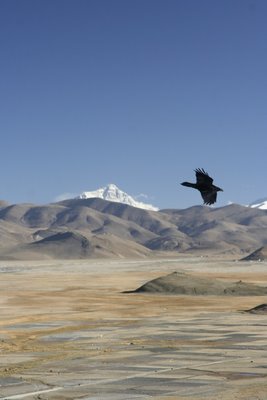 The first view of Everest! Just 73 km away.
The first view of Everest! Just 73 km away. View along the Friendship Highway
View along the Friendship Highway Attempting to avoid roadworks hold ups.They
Attempting to avoid roadworks hold ups.Theywere still there when we finally got through.
 Monks boots, Tashilhunpo Monastery
Monks boots, Tashilhunpo Monastery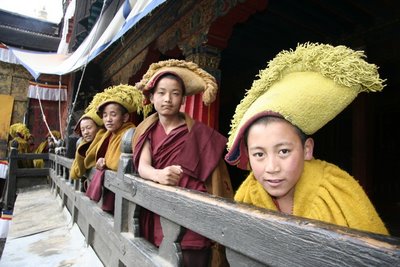 Young monks, Tashilhunpo Monastery
Young monks, Tashilhunpo Monastery Two old monks encircling the Tashilhunpo Monastery
Two old monks encircling the Tashilhunpo Monastery Crossing the river from the Samye Monastery
Crossing the river from the Samye Monastery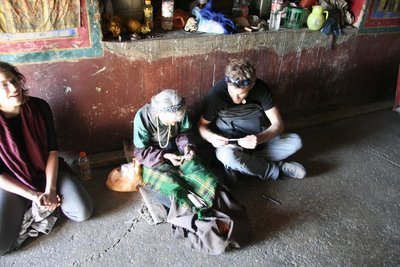 Making cotton candle wicks, mine were never acceptable, Samye Monastery
Making cotton candle wicks, mine were never acceptable, Samye Monastery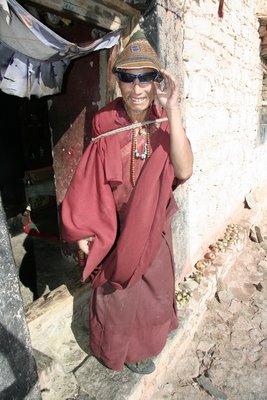 One of many monks trying my shades, Samye Monastery
One of many monks trying my shades, Samye Monastery My three new friends, Nam-Tso Lake camp
My three new friends, Nam-Tso Lake camp My home, Nam-Tso Lake
My home, Nam-Tso Lake Dried Yak dung fuel for heating and cooking, Nam-Tso lake
Dried Yak dung fuel for heating and cooking, Nam-Tso lake
Toys come in all sizes and shapes, Nam-Tso Lake
 The worlds highest lake (apparently): 4718 m, Nam-Tso
The worlds highest lake (apparently): 4718 m, Nam-Tso A change in the weather, Nam-Tso lake
A change in the weather, Nam-Tso lake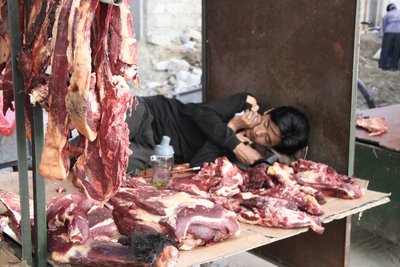 Yak meat pillow, Lhasa
Yak meat pillow, Lhasa Closing time! Lhasa
Closing time! Lhasatakes two days to carve each stamp for each page.
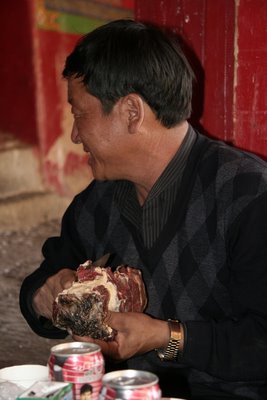 Raw, frozen yak meat; a rather tasteless treat, Ganden Monastery
Raw, frozen yak meat; a rather tasteless treat, Ganden Monastery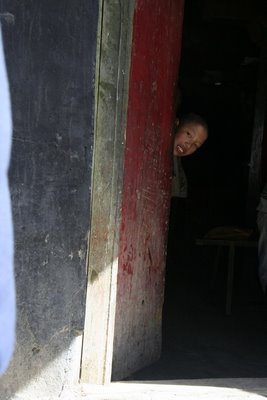 "Try to hide from the westerner", Ganden Monastery
"Try to hide from the westerner", Ganden Monastery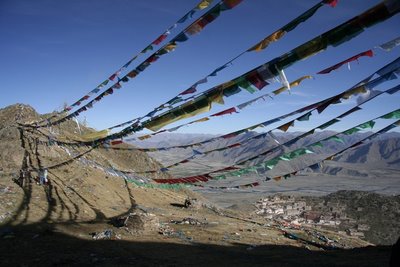 Prayer flags above Ganden Monastery
Prayer flags above Ganden Monastery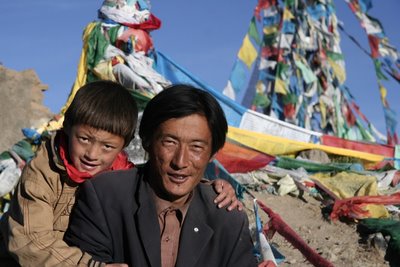 Pilgrims setting out prayer flags, 4650 m at 7.30 am
Pilgrims setting out prayer flags, 4650 m at 7.30 am Ganden Monastery under reconstruction, 7am pilgrimage
Ganden Monastery under reconstruction, 7am pilgrimage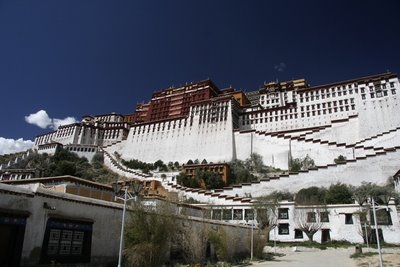 The Potala palace, Tibetan home to the Dalai Lama
The Potala palace, Tibetan home to the Dalai LamaTibet is difficult to describe, the Chinese are working hard to destroy the culture, of the more than 5000 monasteries that existed before the occupation in the 50's, only around 500 remain today. Many of these are still in a state of reconstruction. The political and spiritual leader of Tibet is the Dalai Lama, yet anyone caught with a picture of him will be arrested with an unknown outcome. Evidence of the Chinese "invasion" is everywhere! The friendship highway is being turned from a dirt track into a sealed road to whisk Chinese tourists rapidly to all the sights and then on to the Nepali border, in the hope that they will be attracted to move there. The train to Lhasa, a "gift to Tibet" according to the Chinese is on track to move as many Chinese immigrants onto the plateau as possible and to eventually move out the natural resources of this fragile landscape. The Tibetans do live an extremely hard life! The harsh climate and high altitude make the land void of green for all but the monsoon months of the year, almost nobody has access to clean, running water; rather water is normally collected from amongst the trash in small streams and rivers and boiled before consumption. Trash is a huge problem! There is no education regarding the impact of rubbish, it is everywhere! Even the most pristine mountain streams are often tainted by wrappers, batteries, etc. A sad scene! The children are being taught from infancy to put their hand out to all westerners, this is followed at an older age my "Hello, money?". I paint a picture amongst the opposite extremes; beauty is everywhere, in the people, the land and in their way and ability to survive!


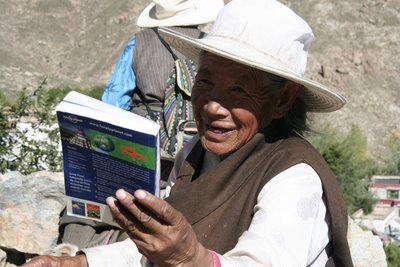





0 Comments:
Post a Comment
<< Home